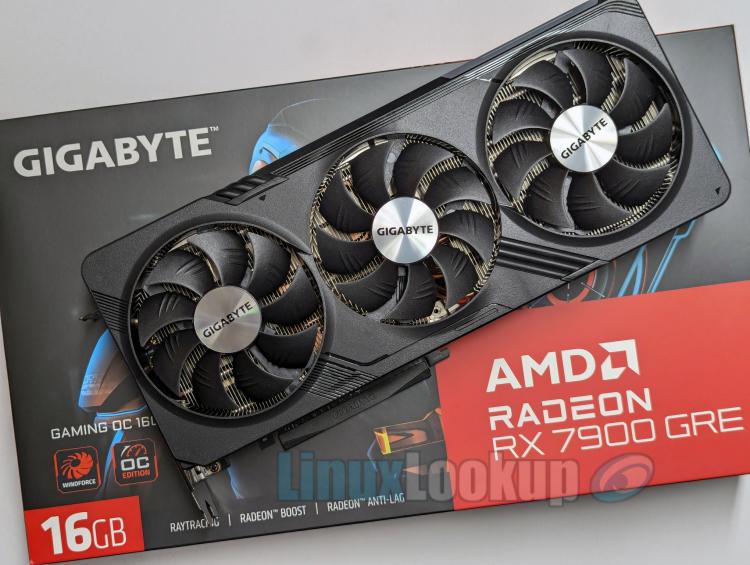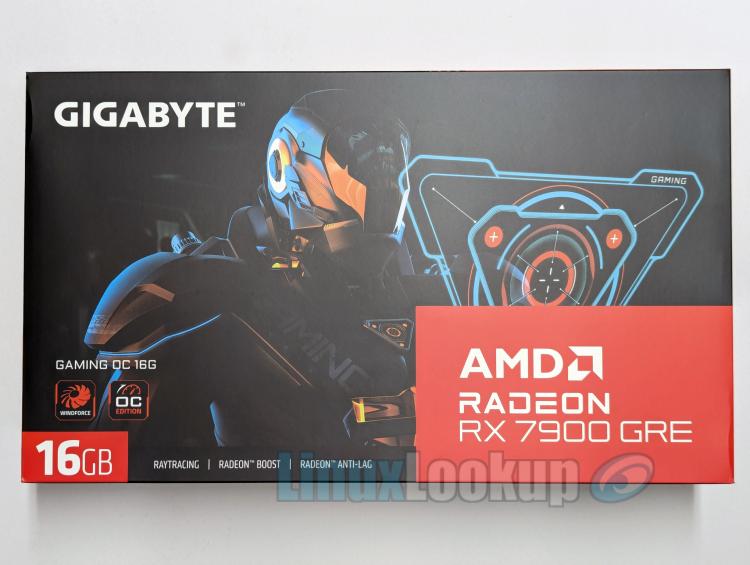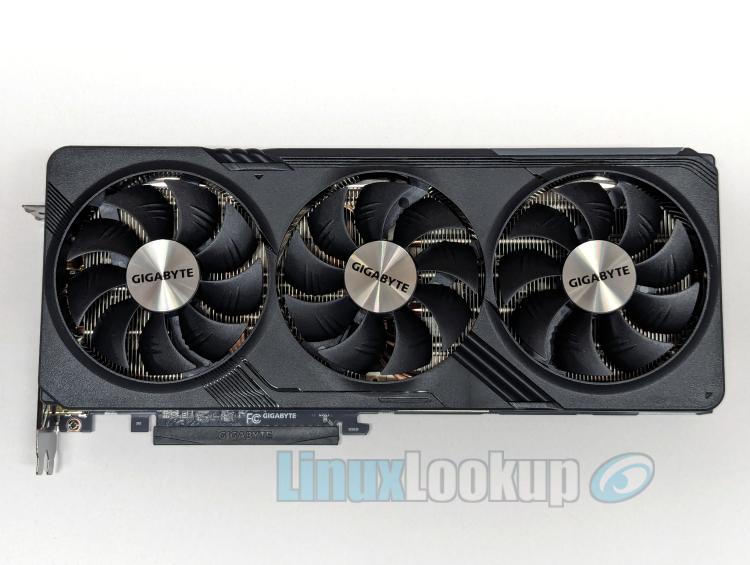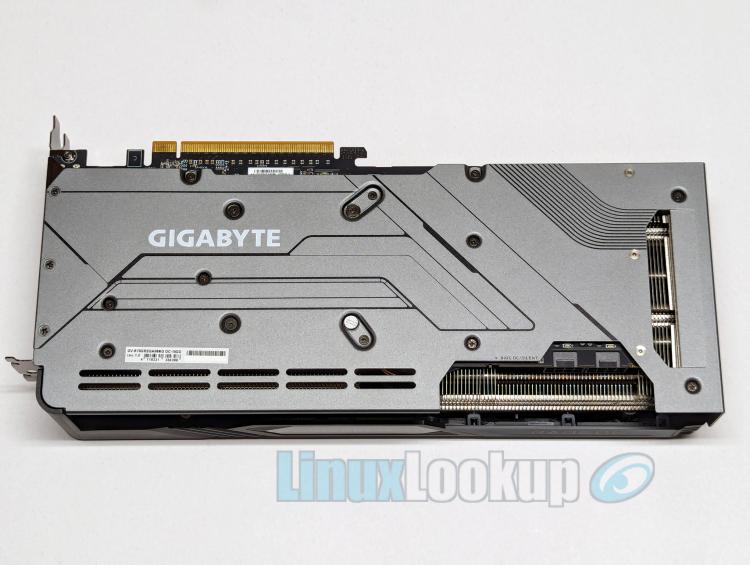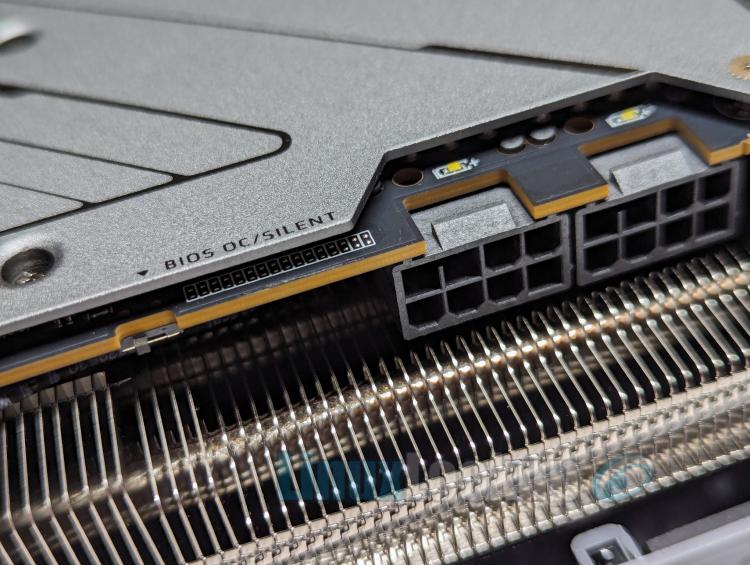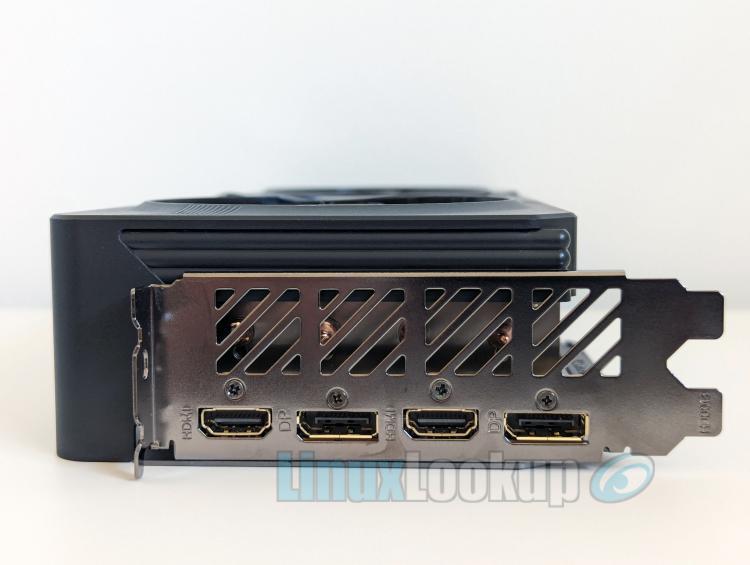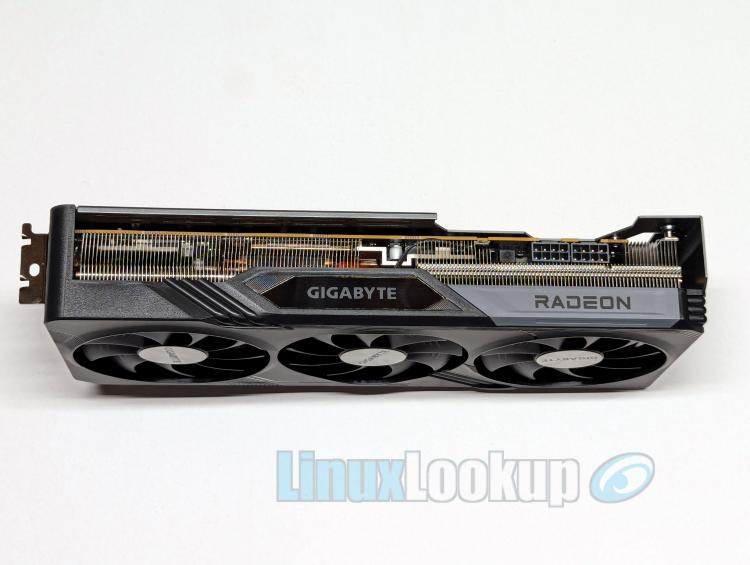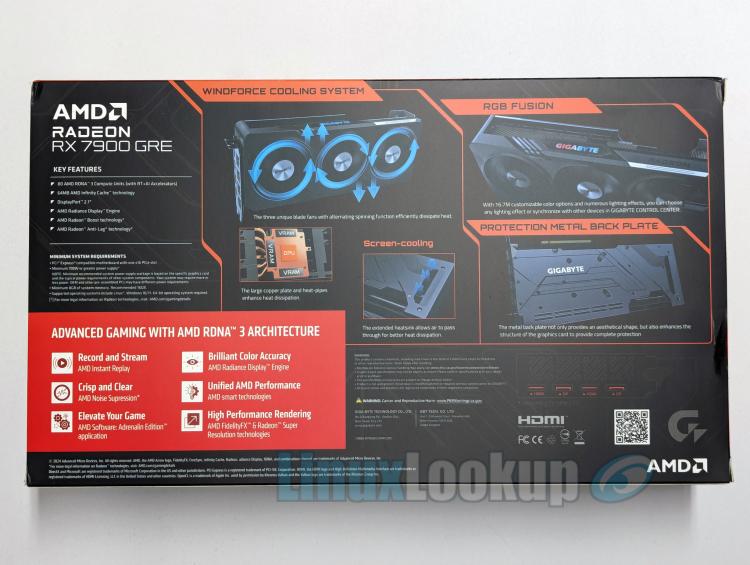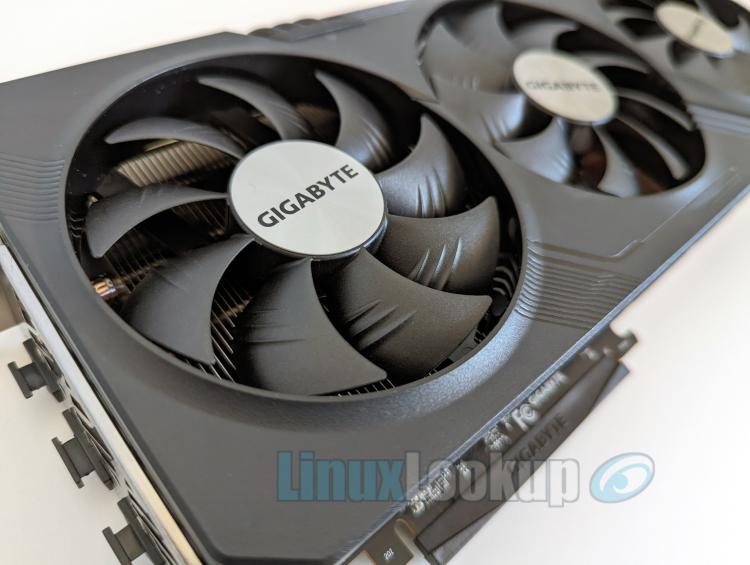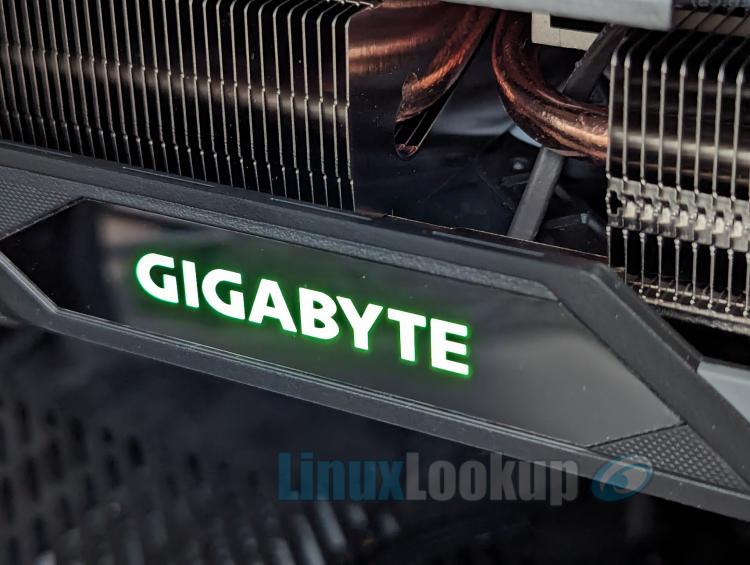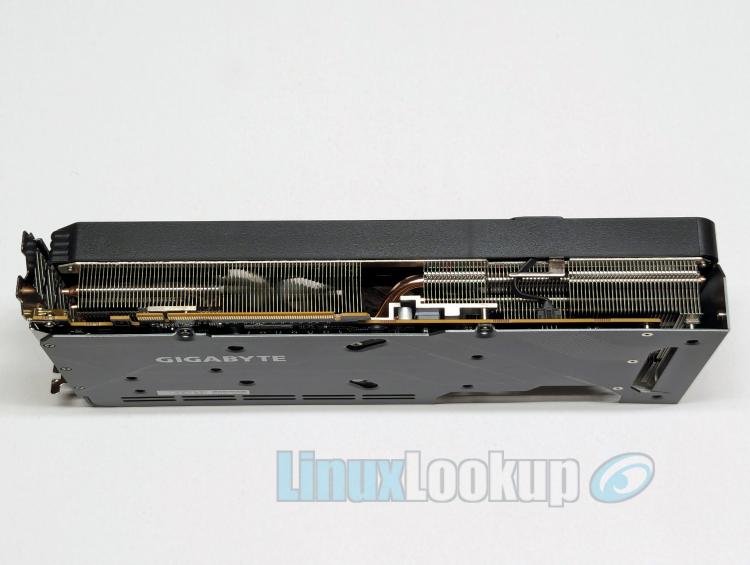GIGABYTE Radeon RX 7900 GRE OC Review
The GIGABYTE Radeon RX 7900 GRE GAMING OC 16G is a factory overclocked graphics card that represents AMD's latest offering in the mid-range segment. While the 7900 GRE technically isn't new, having launched exclusively in Asia last year, AMD is now relying on add-in board partners like GIGABYTE to make this GPU available worldwide, and at a surprisingly fair price point.
In this review, we'll highlight the stand-out features and provide GPU benchmarks for Linux performance.
After debuting in China last July, AMD is now expanding the availability of the RX 7900 GRE graphics card globally. Originally exclusive to the Chinese market, the "GRE" designation signifies Golden Rabbit Edition, commemorating the Year of the Rabbit in 2023.
In the first quarter of 2024, AMD board partner GIGABYTE has launched their Radeon RX 7900 GRE GAMING OC 16G edition, which is widely available through online retailers at a price of $549.99 USD.
As this latest AMD GPU aims to rival the price point of NVIDIA’s RTX 4070 and match the performance of the recently launched NVIDIA RTX 4070 Super, consumers themselves are also scrutinizing its position within AMD's 7000 Series lineup. This places pressure on both NVIDIA's $549 RTX 4070 and the $599 RTX 4070 Super, along with AMD's own $499 RX 7800 XT, marking a pivotal moment in the GPU market. As price-performance dynamics shift once again, Linux gamers are increasingly demanding more value and innovation amidst intensifying competition.
While it's always wise for consumers to explore their options, as a Linux user, you're likely leaning towards AMD rather than NVIDIA. So let's refocus our attention on AMD and delve into highlights of three comparable Radeon RX 7000 Series models.
| RX 7900 XT | RX 7900 GRE | RX 7800 XT | |
| GPU Die | Navi 31 | Navi 31 | Navi 32 |
| Architecture | RDNA 3 | RDNA 3 | RDNA 3 |
| Compute Units | 84 | 80 | 60 |
| Ray Accelerators | 84 | 80 | 60 |
| Game Frequency | 2000MHz | 1880MHz | 2124MHz |
| Boost Frequency | Up to 2400MHz | Up to 2245MHz | Up to 2430MHz |
| Infinity Cache | 80MB | 64MB | 64MB |
| Memory | 20GB GDDR6 | 16GB GDDR6 | 16GB GDDR6 |
| Memory Speed | Up to 20Gbps | Up to 18Gbps | Up to 19.5Gbps |
| Memory Bus | 320-Bit | 256-Bit | 256-Bit |
| Memory Bandwidth | 800GB/s | 576GB/s | 624GB/s |
| Board Power | 315W | 260W | 263W |
As observed, the Radeon RX 7900 GRE effectively bridges the gap between the Radeon RX 7900 XT and the Radeon RX 7800 XT. Despite its 33% increase in cores, the 7900 GRE exhibits a peculiar configuration when compared to its Navi 32 based counterpart, the Radeon 7800 XT. Notably, it features slightly slower 18Gbps memory, resulting in an 8% reduction in bandwidth, while both GPUs maintain 16GB of VRAM along with a 256-Bit memory bus.
The AMD RDNA3 architecture offers a range of advanced features, including AMD Fluid Motion Frames (AFMF), support for the Vulkan API, new hardware AV1 encoders, and the latest iteration of FidelityFX Super Resolution (FSR3). For those unfamiliar, FSR technology is AMD's equivalent of NVIDIA DLSS, enhancing both performance and visual fidelity. Although I haven't personally tested FSR in Linux since initial release (FSR1), utilizing it was as simple as adding a game launch option to Proton-GE. Like its predecessors, FSR3 is Open Source, and although Vulkan support may currently be lacking, progress is being made.
GIGABYTE's Radeon RX 7900 GRE Gaming OC 16G is of course based on the AMD reference design outlined above, but also includes several unique advantages that we'll touch on next.
AMD is known for their commitment and contributions to Open Source software, so let's take a moment to appreciate Linux being listed before Windows on retail packaging, even if it's simply arranged alphabetically.
Unfortunately, GIGABYTE's Control Center software isn't compatible with Linux. However, there are various Open Source Software alternatives available for AMD graphics cards, providing similar flexibility to tailor your system setup according to personal preference.
Aesthetic appeal of the GIGABYTE Radeon RX 7900 GRE GAMING OC 16G is characterized by its two-tone black and grey profile. The front plastic shroud is dominated by three large 90mm fans leaving little room for visual embellishments, however, RGB lighting is incorporated onto the side of the card under the GIGABYTE logo.
On the backside, a matte grey metal backplate adorned with a subtle decorative circuitry pattern complements the overall design. The cooling cutouts reveal an all-black Printed Circuit Board (PCB), and inward, prominently features a large copper plate alongside seven copper composite heat pipes, ensuring efficient thermal management.
Physically this graphics card measures 302mm length, 130mm width, 56mm height, and carries a 2.5 slot card profile for installation.
Power is sourced from two 8-pin PCIe power connectors, each equipped with its own power indicator LED. The typical board power is rated at 260W and recommends a minimum PSU of 700W.
Adjacent to the power connectors, a toggle switch facilitates the dual BIOS feature, enabling users to quickly toggle between the default OC mode and silent operation mode.
For display connectivity there are two DisplayPort 2.1 and two HDMI 2.1 ports.
The GIGABYTE Radeon RX 7900 GRE GAMING OC 16G is a factory overclocked graphics card that delivers improved performance right out of the box. While the AMD Radeon RX 7900 GRE reference design specifications feature a game clock of 1880MHz and a boost clock of up to 2245MHz, GIGABYTE's 7900 GRE offers a game clock of 2052MHz and a boost clock of 2391MHz. Although the overclock may seem minor, it still represents an increase in performance.
Performance
Linux GPU benchmarking is performed using a variety of current and legacy game titles available through Steam. Given that not all games natively support Linux, we leverage Steam Play (Proton) or Proton-GE for Linux compatibility.
The official AMD Radeon driver version 23.40.2 was available at launch for select Linux distributions. So choice of graphics driver will be either the latest AMD official, Mesa point release from the Kisak-Mesa (Fresh) PPA or the bleeding-edge Mesa from the Oibaf-Latest PPA, with our specific version detailed below.
In addition to Linux gaming benchmarks, our evaluation also includes results from UNIGINE Superposition.
Test System
- Processor: Intel Core i7-13700K
- Motherboard: GIGABYTE Z790 AORUS MASTER X
- Memory: 64GB DDR5-6000
- Distribution: Ubuntu 22.04.4 LTS Desktop
- Linux Kernel: 6.5.0-27-generic
- Graphics Driver: Mesa 24.0.5
- Steam Play: Proton Experimental
Cyberpunk automatically set Ray Tracing Ultra on start-up, so I decided to give it a whirl. Let's just say Ray Tracing performance was less than desirable, even at 1080p, so I've skipped RT testing altogether.
| Cyberpunk 2077: Phantom Liberty | |||
|---|---|---|---|
| Graphics Preset: Ultra, Ray Tracing: Off, VKD3D (DX12) | |||
| Resolution | 1080P | 1440P | 4K |
| Average FPS | 138.4 | 91.6 | 43.4 |
| 1% Low FPS | 109.2 | 74.6 | 32.8 |
| 0.1% Low FPS | 98.7 | 68.2 | 29.2 |
| Average Power Draw | 167W | 233W | 242W |
| Average GPU Temperature | 55C | 58C | 58C |
| Starfield | |||
|---|---|---|---|
| Graphics Preset: Ultra, VKD3D (DX12) | |||
| Resolution | 1080P | 1440P | 4K |
| Average FPS | 67.2 | 52.8 | 34.9 |
| 1% Low FPS | 55.6 | 45.4 | 30.4 |
| 0.1% Low FPS | 46.8 | 38.6 | 28.7 |
| Average Power Draw | 247W | 248W | 248W |
| Average GPU Temperature | 57C | 58C | 58C |
| Counter-Strike 2 | |||
|---|---|---|---|
| Graphics Preset: High Defaults, Vulkan (Linux Native) | |||
| Resolution | 1080P | 1440P | 4K |
| Average FPS | 336.2 | 231.4 | 205.7 |
| 1% Low FPS | 248.6 | 195.5 | 188.6 |
| 0.1% Low FPS | 230.7 | 182.7 | 172.4 |
| Average Power Draw | 92W | 174W | 209W |
| Average GPU Temperature | 51C | 54C | 54C |
| Borderlands 3 | |||
|---|---|---|---|
| Graphics Preset: Badass, VKD3D (DX12) | |||
| Resolution | 1080P | 1440P | 4K |
| Average FPS | 204.3 | 147.2 | 78.2 |
| 1% Low FPS | 142.2 | 133.5 | 61.4 |
| 0.1% Low FPS | 118.7 | 97.5 | 58.2 |
| Average Power Draw | 244W | 244W | 244W |
| Average GPU Temperature | 56C | 57C | 57C |
| UNIGINE Superposition | |
|---|---|
| Resolution: 2560x1440, Shaders: 4K Optimized, Graphics API: OpenGL | |
| Average FPS | 238.66 |
| Maximum FPS | 308.25 |
| Minimum FPS | 178.08 |
| Min GPU Temperature | 40C |
| Max GPU Temperature | 59C |
| Score | 31909 |
Gallery
Conclusion
The Good - Pros- Excellent 1440p gaming performance
- 16GB of GDDR6 VRAM
- Modest factory overclock
- Potential for memory overclocking
- Latest AMD RDNA 3 AV1, AI, and FSR3 features
- Dual BIOS feature
- Good power efficiency & cooling
- Reasonable price
The Bad - Cons
- Poor Ray Tracing performance
- Global launch was delayed
The Ugly - Issues
- The significance of "GRE" may be meaningless in a global market context
The Verdict - Opinion
While AMD's decision to globally release the 7900 GRE a year later may have been a competitive strategy, this "Rabbit" resembles more the Tortoise from the children's story — albeit slow out of the gate, it's still a winner!
The GIGABYTE Radeon RX 7900 GRE OC delivers strong performance at a reasonable price point. Furthermore, with the recent news of AMD lifting the memory overclocking limitations from Windows drivers, it's only a matter of time before we see this optional performance enhancement reflected in Linux, making the 7900 GRE even more enticing for those inclined to explore manual overclocking.
